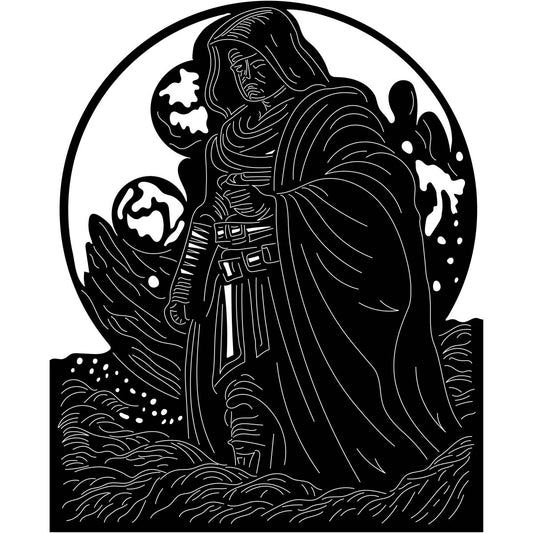In the world of digital design, engineering, and manufacturing, file formats play a crucial role in ensuring seamless communication between different software and machines. One of the most widely used file types in this domain is the DXF file. Whether you are an architect, engineer, graphic designer, or hobbyist, understanding DXF files and where to find reliable DXF downloads can save you time, improve your workflow, and open up creative possibilities.
Table of Contents
What Are DXF Files?
DXF stands for Drawing Exchange Format, a file type developed by Autodesk in 1982. It was designed to allow interoperability between AutoCAD and other CAD (Computer-Aided Design) programs. Since then, DXF has become a standard format for exchanging 2D and 3D drawings across various platforms.
Unlike proprietary file formats that may only work in one software, DXF files are widely supported by CAD applications, vector graphic software, CNC machines, laser cutters, and even some 3D printing tools. This versatility makes DXF one of the most reliable formats for professionals and hobbyists alike.

Why Use DXF Files?
- Universal Compatibility
The biggest advantage of DXF files is their ability to be opened and edited across multiple programs without losing data. - Scalability
Since DXF is vector-based, designs can be scaled to any size without quality loss—perfect for technical drawings and precise cutting. - Accuracy
DXF maintains exact measurements, which is essential in industries like architecture, engineering, and manufacturing. - Versatility
DXF can represent both 2D and 3D drawings, making it useful for a wide range of applications.
Applications of DXF Files
DXF files are used in multiple industries and creative fields. Some common applications include:
- Architecture & Construction: Floor plans, blueprints, and layouts.
- Engineering: Mechanical designs, machine parts, and product prototypes.
- Graphic Design: Vector illustrations for logos, signage, and branding.
- CNC Machining: Tool paths for milling, routing, or drilling.
- Laser Cutting & Engraving: Patterns, stencils, and templates.
- 3D Printing: Converting 2D drawings into 3D models.
The flexibility of DXF makes it the go-to format for professionals who need precision and compatibility.
Where to Find DXF Downloads
If you’re working on a project and don’t want to start from scratch, you can save time by exploring DXF download resources available online. Many websites offer free or paid libraries of DXF designs for various applications.

Types of DXF Downloads You Can Find Online:
- Design Templates – Geometric patterns, mandalas, and decorative elements.
- Industry-Specific Files – Technical drawings, automotive parts, or architectural layouts.
- DIY & Hobby Projects – Stencils, wall art, jewelry, and craft designs.
- Educational Resources – Sample files for learning CAD and CNC machining.
When searching for DXF downloads, it’s important to ensure that the source is reliable. High-quality files save time and prevent errors when importing into your software or machine.
How to Use DXF Downloads
Once you have downloaded a DXF file, here’s how you can put it to use:
- Open in CAD Software: Import the DXF into your preferred program, such as AutoCAD, CorelDRAW, Adobe Illustrator, or Fusion 360.
- Edit the File: Customize the design to fit your project needs. You can scale, modify, or combine elements.
- Export for Machines: If you’re using CNC routers, laser cutters, or 3D printers, export the edited DXF into a machine-compatible format.
- Test Before Production: Always preview or run a test cut/print to ensure accuracy before large-scale production.
Tips for Working with DXF Files
- Check File Quality: Poorly made DXF files can cause errors or machine malfunctions.
- Keep Layers Organized: Use separate layers for different elements (cutting, engraving, drilling).
- Simplify Complex Designs: Too many nodes can slow down machines—simplify curves when possible.
- Verify Measurements: Ensure units and scales match your intended use.
Free vs. Paid DXF Downloads
- Free DXF Downloads: Great for hobbyists or beginners who want quick access to basic designs. However, quality can vary, and customization may be limited.
- Paid DXF Downloads: Typically offer more professional, detailed, and ready-to-use designs. Ideal for businesses that need accuracy and efficiency.
Investing in premium DXF downloads can be worthwhile if you’re working on commercial projects or need high-quality patterns.
The Future of DXF Files
Despite newer file formats being introduced, DXF files remain a cornerstone of CAD and design industries. Their adaptability across software and hardware ensures that they will continue to be used for years to come. With the growing popularity of CNC machines and laser cutting in both professional and DIY spaces, the demand for DXF downloads is only increasing.
Conclusion
DXF files are an essential tool in the world of design, engineering, and digital fabrication. They provide universal compatibility, precision, and scalability—making them perfect for everything from technical blueprints to decorative crafts. With countless DXF download resources available online, designers and makers have endless opportunities to bring their ideas to life.
Whether you are a beginner learning CAD or a professional working with CNC machines, mastering DXF files and leveraging quality DXF downloads will streamline your workflow, save time, and enhance your creative potential.

